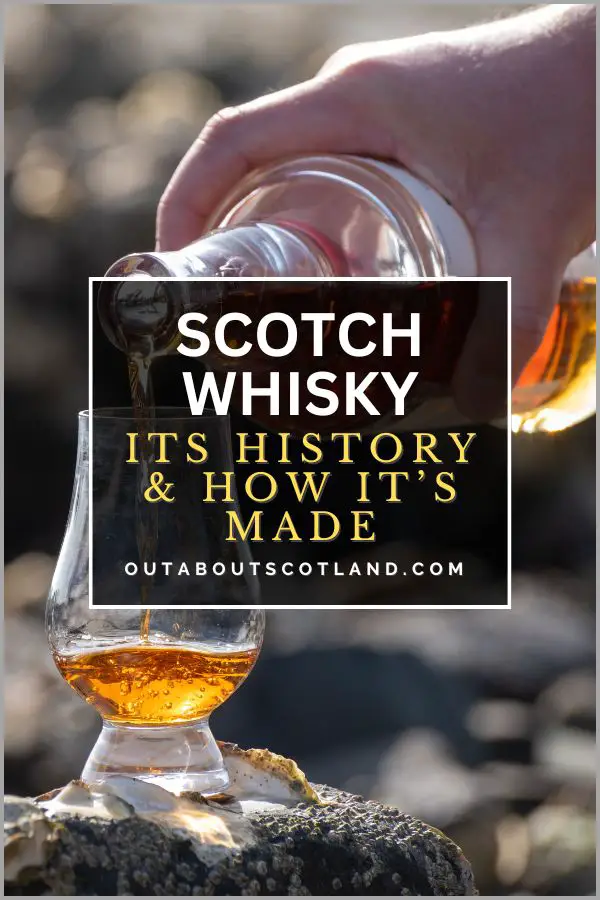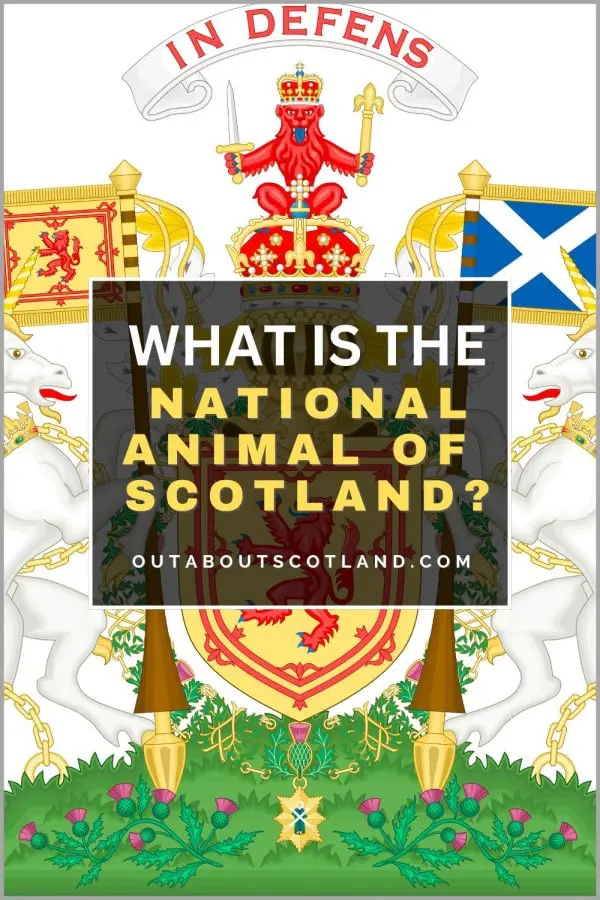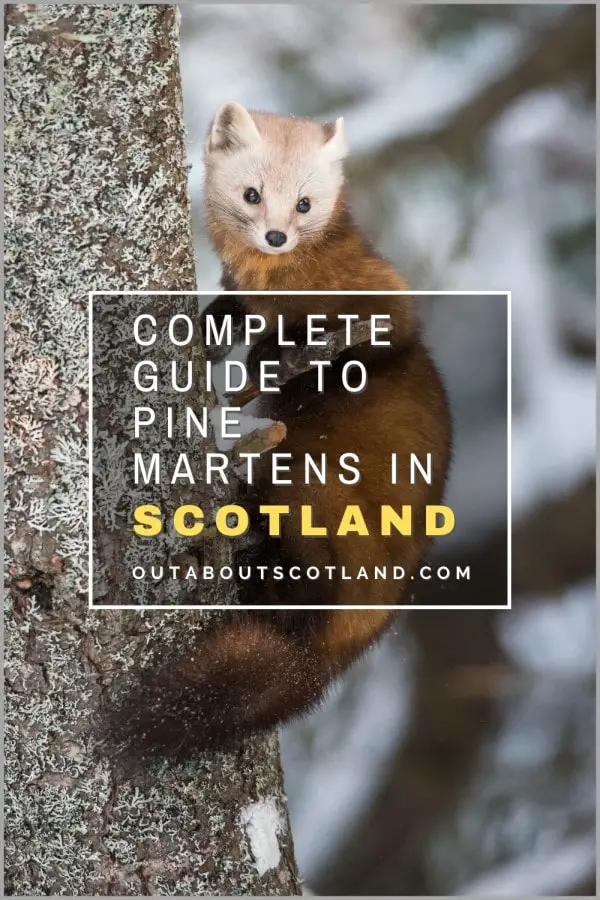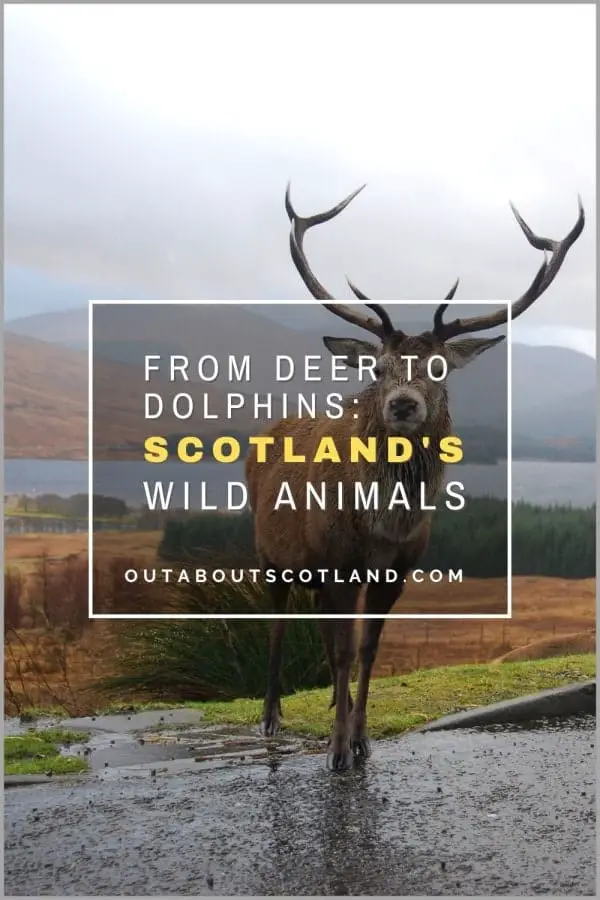In this article, we’ll embark on a fascinating journey through the majestic landscapes, rich history, and vibrant culture of Scotland. From the rugged beauty of the Highlands to the historic charm of Edinburgh, there’s no shortage of interesting facts waiting to be uncovered about this beautiful country.
Whether you’re a seasoned traveller, a history buff, or simply curious about Scotland, this article will help you discover why it’s a must-visit destination on any travel bucket list.
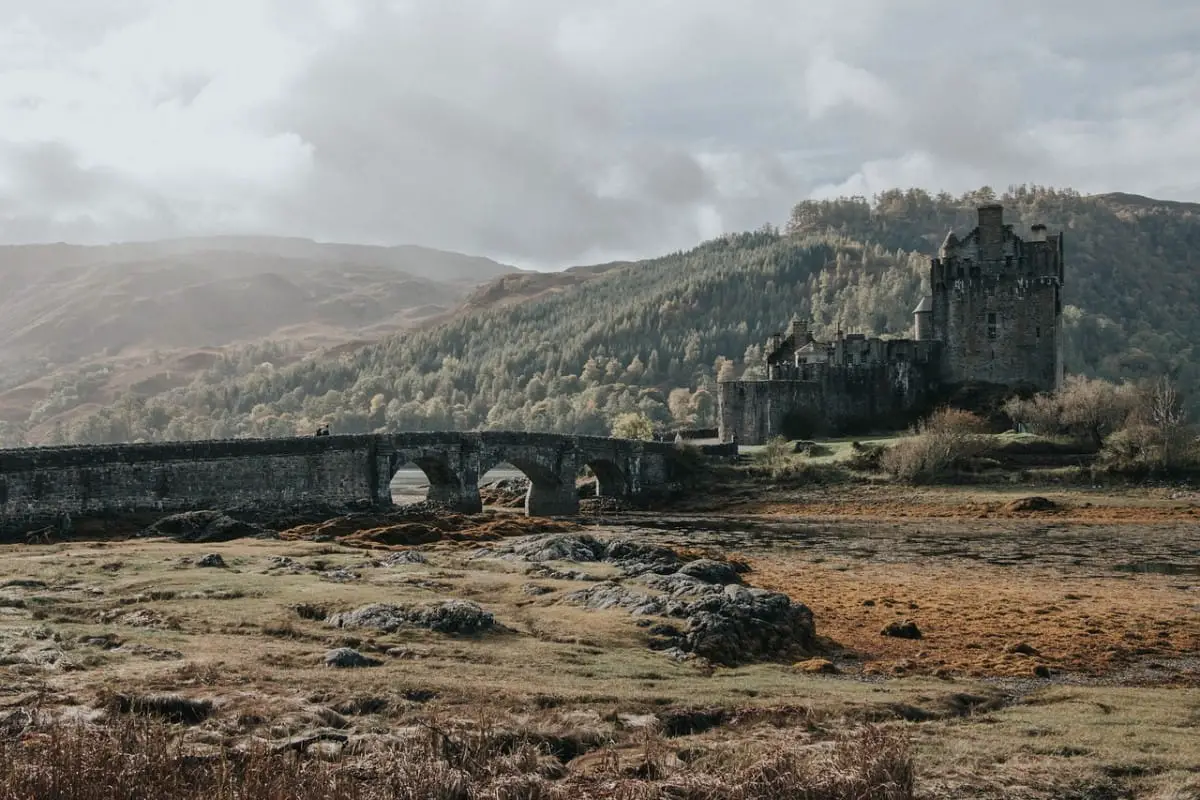
Facts About Scotland’s Landscapes
1. Scotland makes up a large part of the British Isles and its size is roughly equivalent to one-third of the mainland, comparable to the Czech Republic. The total area is 30,981 square miles of which 97% is land and 3% is water. Being an island it’s surrounded by coastline – 7,330 miles of it – except for the border with England which is 96 miles long.
2. Many tourists come to Scotland to explore the Highlands, the beautiful mountainous region in the northwest. The Highland Boundary Fault, a sizable geological fault that separates the Highlands from the Lowlands and has pushed the terrain in the northwest into significant peaks while the south remains largely flat, is the cause of the stark differences in the landscape between the two.
3. One of Scotland’s most popular tourist destinations is John o’ Groats which features the famous signpost located near the most northerly point on mainland Britain.
The truth is, though, that the most northerly point on Britain’s mainland is Dunnet Head, 14 miles west of John o’ Groats. The furthest north-west point on mainland Britain is Duncansby Head which is a 30-minute walk along the coast from John o’ Groats.
4. Holyrood Park in Edinburgh is one of the most visited green spaces in Britain and every visitor to Scotland’s capital city should climb to the top of Arthur’s Seat to see the amazing views across the city. You might be surprised to learn that Arthur’s Seat is actually the remains of an extinct volcano that was formed around 340 million years ago.
5. Scotland’s geology is one of the oldest in the world, and the rocks in the northwest of the country are an incredible 3 billion years old. At that time, the landmass that would eventually become Scotland was actually located at the South Pole.
6. Scotland’s mountains are classified according to their height with these names:
| Classification | Height | Number in Scotland |
| Marilyn | Up to 490 feet (150 metres) | 1,216 |
| Donald | Over 2,000 feet (607 metres) | 140 |
| Graham | 2,000 to 2,500 feet (607 to 762 metres) | 221 |
| Corbett | 2,500 to 3,000 feet (762 to 914 metres) | 221 |
| Munro | Over 3,000 feet (914 metres) | 282 |
7. A trip to the Scottish Highlands isn’t complete without visiting Ben Nevis, the highest mountain in Britain. At 4,413 feet the summit is quite a climb but because it’s so popular the trail to the top is very busy, especially in summer.
What many people don’t know is that the mountain they are hiking up was originally part of an immense volcano and Ben Nevis is all that remains of the inner dome.
8. There are over 30,000 freshwater lochs in Scotland although strictly speaking small lochs have their own designation which is a ‘lochan’. Of these 30,000 bodies of water the 5 largest – lochs Ness, Shiel, Morar, Awe and Lomond – contain one-third of the total water volume.
9. The most famous loch in Scotland is of course Loch Ness. It’s easy to think a monster could hide in the loch when you consider just how big it is. There are approximately 263 billion cubic feet of water in Loch Ness, which means it holds more freshwater than all the lakes of England and Wales combined.
10. Loch Ness never freezes. Due to the water which is thick with black peat, it retains a lot of heat from the sun and average temperatures never veer far from 5 °C, no matter if it’s the middle of summer or the depths of winter.
Protect Your Family From Scotland's Biting Midges
- Powerful, reliable protection for up to 8 hours
- Water- and sweat resistant
- Repels midges, mosquitoes, horse flies, sand flies, fleas and ticks
- Safe for use on adults, children over 30 months and pregnant women
- Non-sticky, moisturising with a pleasant fragrance
- Packaging may vary
Facts About Scotland’s Towns and Cities
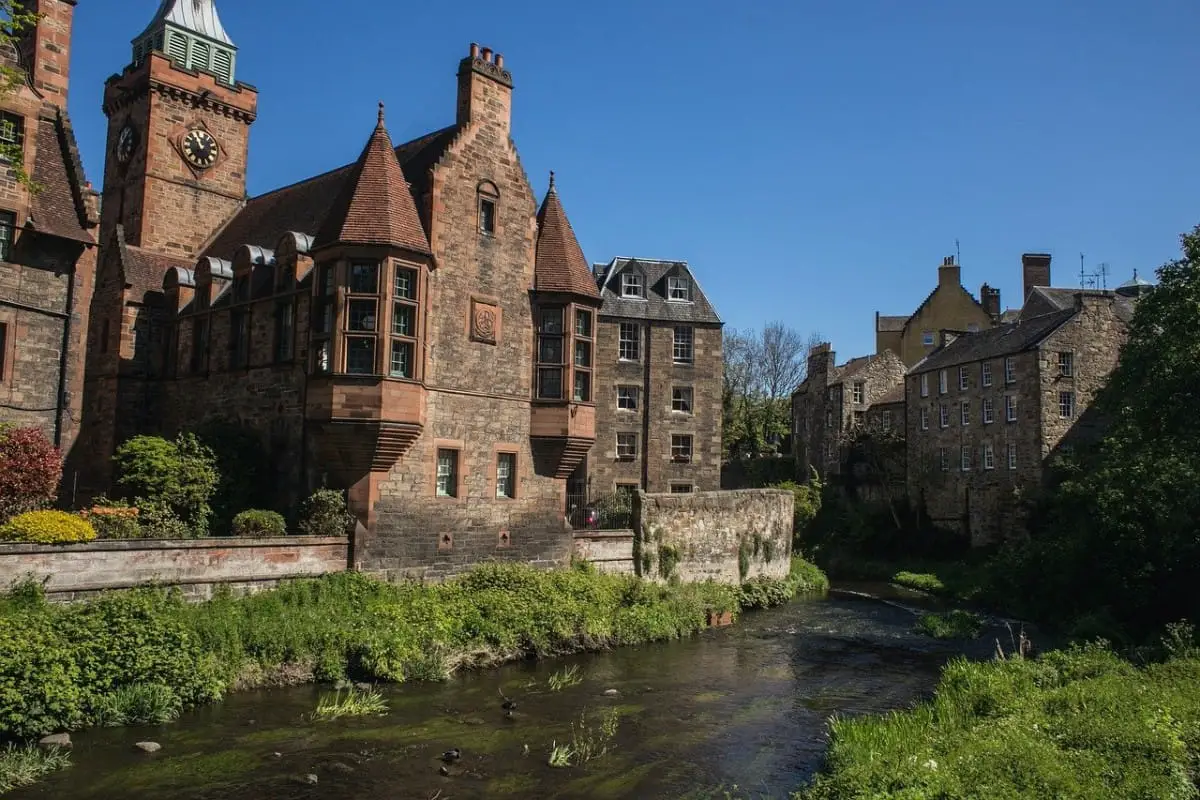
11. The Scottish capital of Edinburgh sets the stage for the world’s biggest arts festival each year in August. The Edinburgh Fringe Festival has been running since 1947 and from the initial eight theatre companies, it has grown into an event that features over 3,000 shows that are held in more than 300 different venues across the city.
12. Edinburgh is well known for its historic buildings but did you know that in the city centre, more than 75% of all buildings are listed as historically significant? In total, there are over 4,500 listed buildings in Edinburgh.
13. Not only does Edinburgh have a huge amount of history but it also has a huge amount of green space. The city is officially the greenest in the United Kingdom with a whopping 112 public parks. Glasgow (the name means ‘green glen’ in Gaelic) comes second with 90 public parks.
14. Edinburgh might be the capital of Scotland today, but in the past, it was the city of Stirling that held the privilege. Until the union of the Scottish and English crowns in 1603, the official royal palace was Stirling Castle which is located close to two of the most important battle sites in Scottish history: Bannockburn and Stirling Bridge.
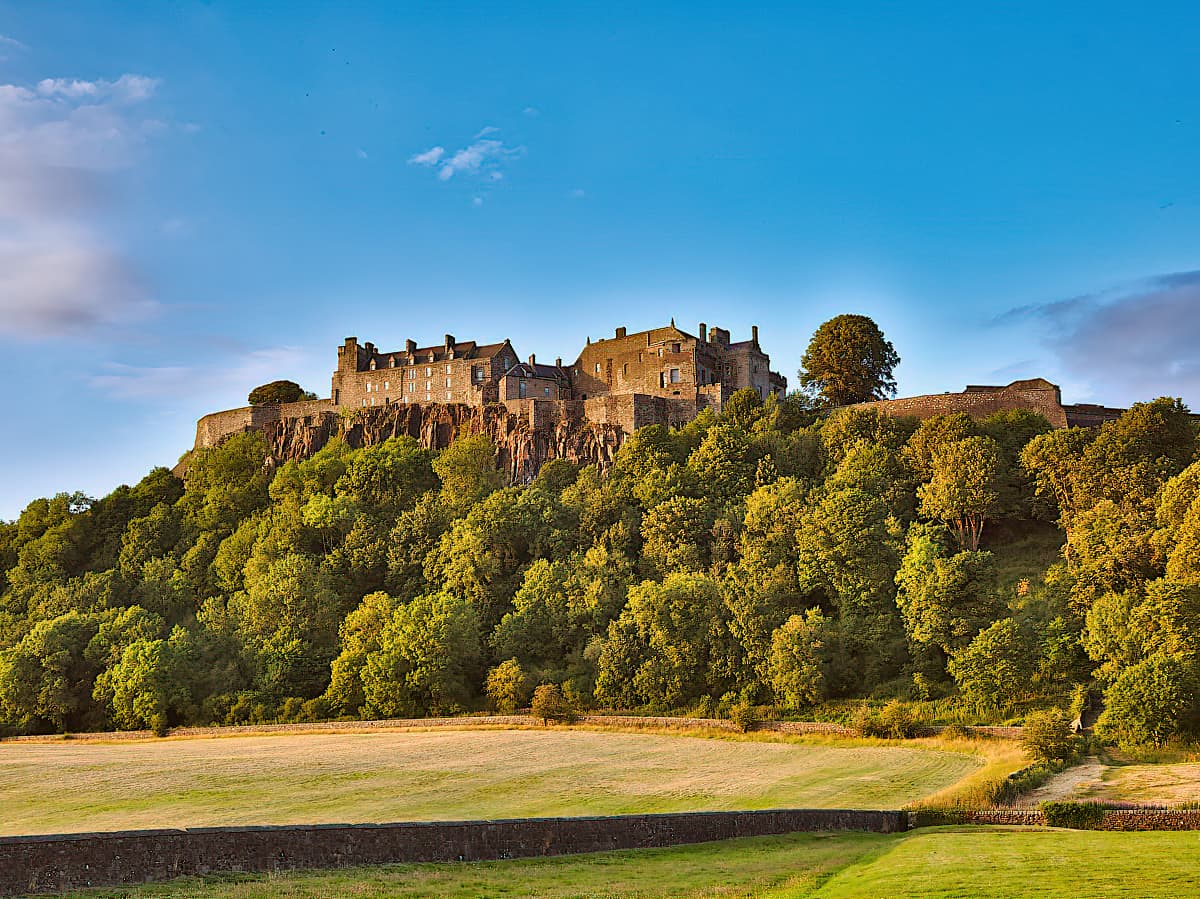
15. Just like Edinburgh Castle, Stirling Castle was built on top of a rock outcrop which is a volcanic plug. The 250-foot Castle Hill offers panoramic views across the relatively flat surrounding landscape – which possibly explains why the earliest recorded attempted flight by a human took place at Stirling Castle in 1507.
16. The world’s oldest football was found in Stirling Castle, hidden behind an oak panel. It has been dated to the early 1500s.
17. The largest city in Scotland – by far – is Glasgow which covers 68 square miles and is home to more than 600,000 people. Getting around the city is easy though thanks to the only underground subway in Scotland which was opened in 1896 making it the third-oldest underground railway in the world.
18. Scotland’s oldest museum is located in Scotland but it’s an attraction that’s frequently missed by visiting tourists. The Hunterian Museum was built in 1807 inside the University of Glasgow.
19. The University of Glasgow is the 4th-oldest university in the world. It was founded in 1451 and past students include the economist Adam Smith and engineer Lord Kelvin.
20. One of Glasgow’s top tourist attractions is the Glasgow Science Centre which sits on the banks of the River Clyde more-or-less opposite the Riverside Museum of Transport. The science centre is home to the Glasgow Tower which at 127 metres is the tallest fully-rotating structure in the world.
Facts About Scotland’s Wildlife
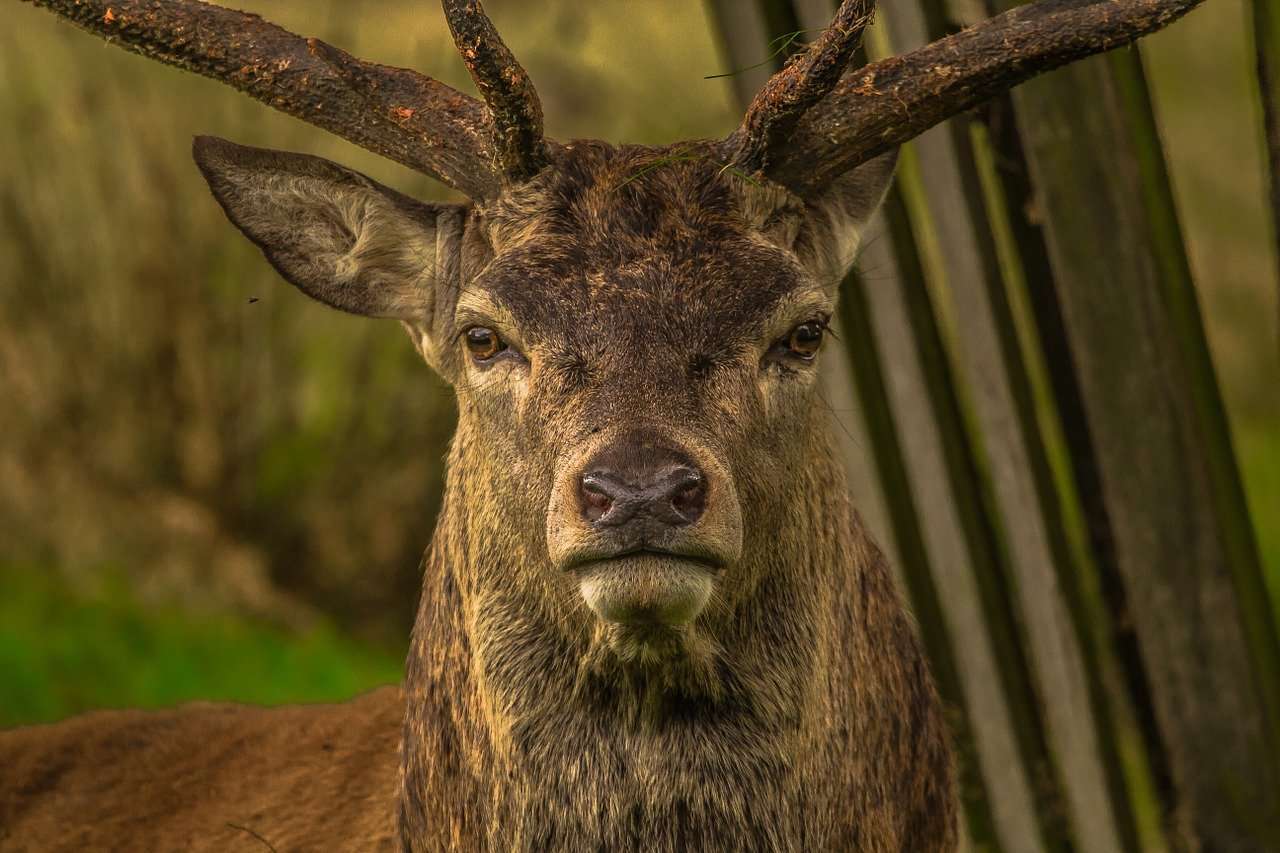
21. One of Scotland’s best-loved native animals is the red squirrel. These lovable animals can be seen throughout Scotland’s forests but there are far fewer of them today than there were before the Victorians introduced grey squirrels. Sadly, their numbers have declined from around 3.5 million to just over 120,000 in Scotland.
22. Another favourite with wildlife spotters is the puffin, a seabird that lives in burrows in the short grass on top of cliffs around Scotland’s coastline. They’re easily identified by their brightly-coloured orange bill which evolved its shape to hold their favourite meal of sand eels. The most sand eels recorded in a puffin’s bill was 83!
23. One of the most endangered cats in the world is the Scottish wildcat. These elusive animals were once prolific in the Scottish Highlands but their numbers have now dwindled to just 100 in the wild. If you’d like to see them in captivity you can visit the Scottish Deer Centre, the Highland Wildlife Park or Edinburgh Zoo.
24. Edinburgh Zoo is home to the only knighted penguin in the world. A major in the Norwegian army first adopted Sir Nils Olav in 1972, and ever since then he has represented Norway. He’s even been promoted over the years, from corporal in 1982 to brigadier in 2016.
25. One of the lesser-spotted animals in Scotland is the pine marten. These charismatic mammals are roughly the size of a domestic cat but are extremely agile and like hunting small animals like voles, rabbits and insects.
They’re also partial to squirrels and there are programmes to re-introduce them in certain regions of Scotland to reduce grey squirrel numbers. Thankfully our native red squirrels are faster than pine martens so they’re unlikely to become a meal for these voracious hunters.
26. Red deer are one of Scotland’s largest land mammals, standing an impressive 4 feet at the shoulder and weighing up to 500 pounds. They’re the largest deer species in Britain and are famed for the ‘rut’ in autumn when males seek out other males to fight for dominance over herds of females.
These animals have been in Scotland for a long time and remains have been uncovered that are 11,000 years old.
27. Red deer are not exactly the most prolific breeders on the planet. The females (hinds) often don’t give birth till they are 3 years old and the males tend to only breed after the age of 5. Hinds also only give birth to one calf and they usually mate just once every 2-3 years.
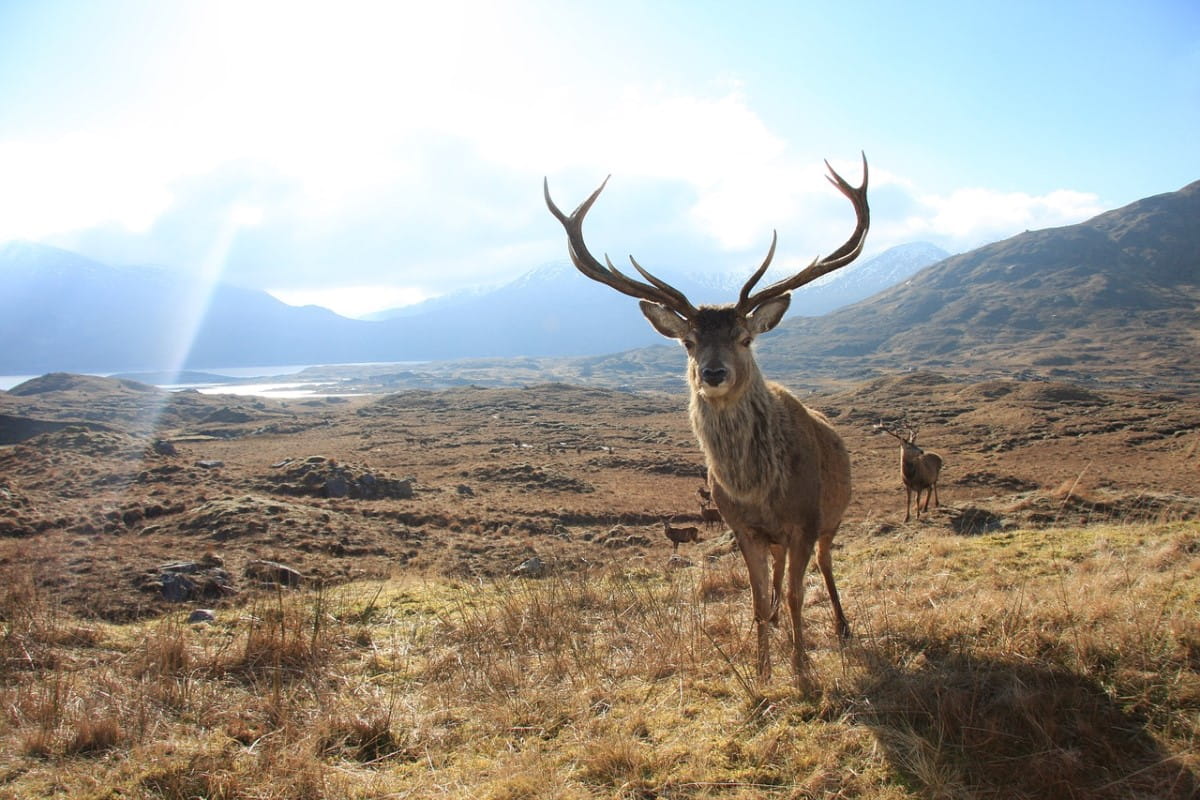
28. Several boat tours sail around the Outer Hebrides in search of dolphins, as these cetaceans are normally found hunting fish in those waters. One other place in Scotland that offers near-guaranteed sightings of dolphins is the Moray Firth near Inverness, which is home to Britain’s only resident pod of bottlenose dolphins.
29. The sea eagle is the largest bird in the United Kingdom, with a wingspan coming in at an enormous 8 feet. Breeding pairs can be seen on many of the west coast islands, but Mull, Skye, and Rum, in particular, have healthy populations.
That wasn’t always the case though, as they were almost hunted to extinction in the 1800s and were only re-introduced to Scotland in the 1970s.
30. The remotest island in Scotland is Hirta in the St. Kilda archipelago, which lies 40 miles west of North Uist.
One of the animals that happily lives on this cold and near-desolate island is the St. Kilda field mouse, which is thought to have arrived on Viking ships. Due to the lack of predators on Hirta, the St. Kilda field mouse grows to twice the size of its cousins on the mainland.
Book Tours in Scotland
Facts About Scotland’s People and Culture
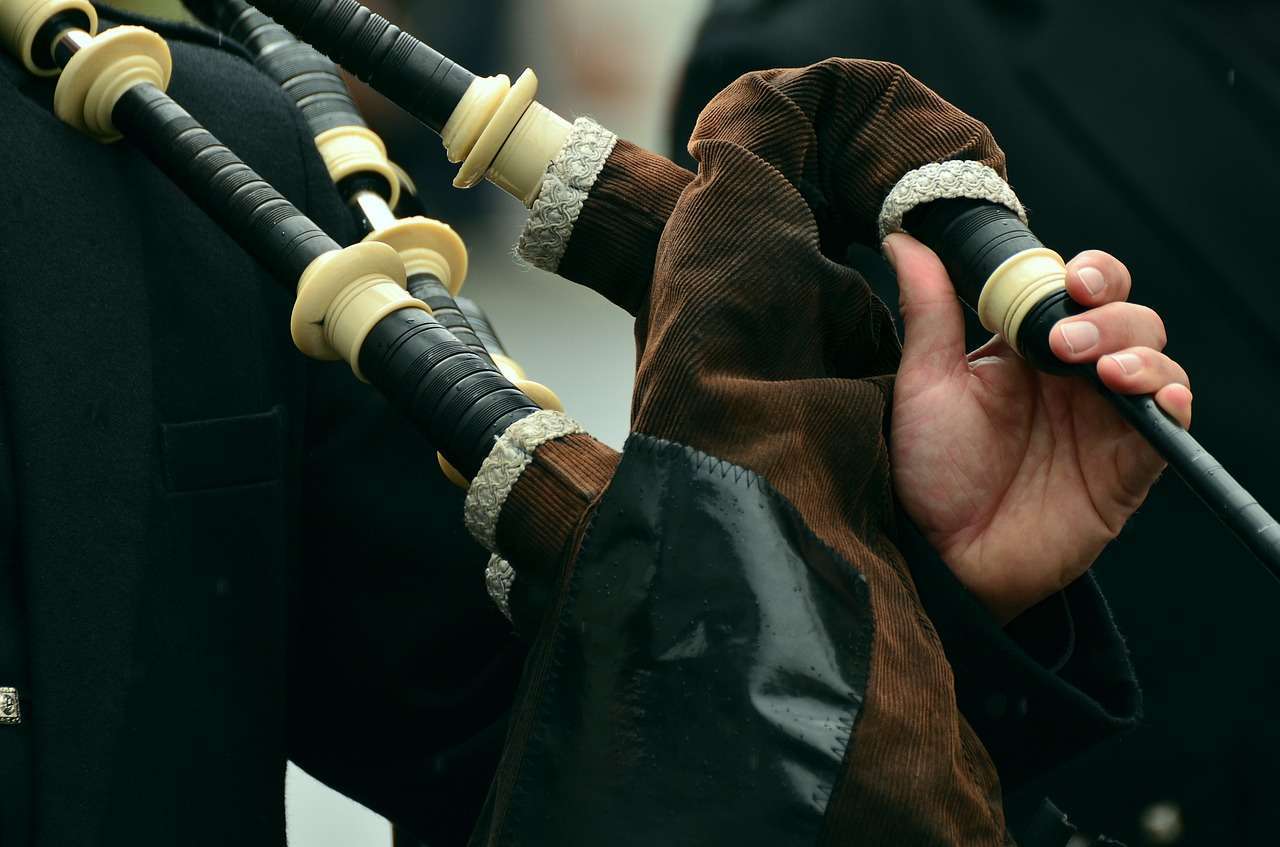
31. People have lived in Scotland for a very long time and remains have been uncovered on Scotland’s western isles that show humans lived there at least 12,000 years ago. It’s thought the first arrivals in Scotland were hunter-gatherers who started to make their way north after the last ice age began retreating 15,000 years ago.
32. Scotland’s ancient tribes were one of the few in the world who were able to resist the might of the Roman army.
There were many Scottish tribes at the time but the most powerful were the Picts who were famed for the blue body paint they wore. So ferocious were the Caledoni (the name given to Scottish tribes by the Romans) that two vast walls were built to contain them – the Antonine Wall and Hadrian’s Wall, both of which have sections that still stand today.
33. Aside from Mary Queen of Scots and William Wallace, famous Scots include the national poet Robert Burns, influential architect Charles Rennie Mackintosh, J.. M.. Barrie, who wrote Peter Pan, Alexander Fleming, who discovered penicillin, philosopher David Hume, and physicist James Maxwell.
Modern Scots include actor Sean Connery, tennis player Andy Murray and comedian Billy Connolly.
34. Burns Night is the annual celebration of the life and works of poet Robert Burns, who was born on January 25. However, the very first Burns Night was held by a group of Burn’s friends on the 29th of January 1802, as they got the date wrong. The date of the celebration was changed to the 25th of the following year after they investigated Burn’s parish records.
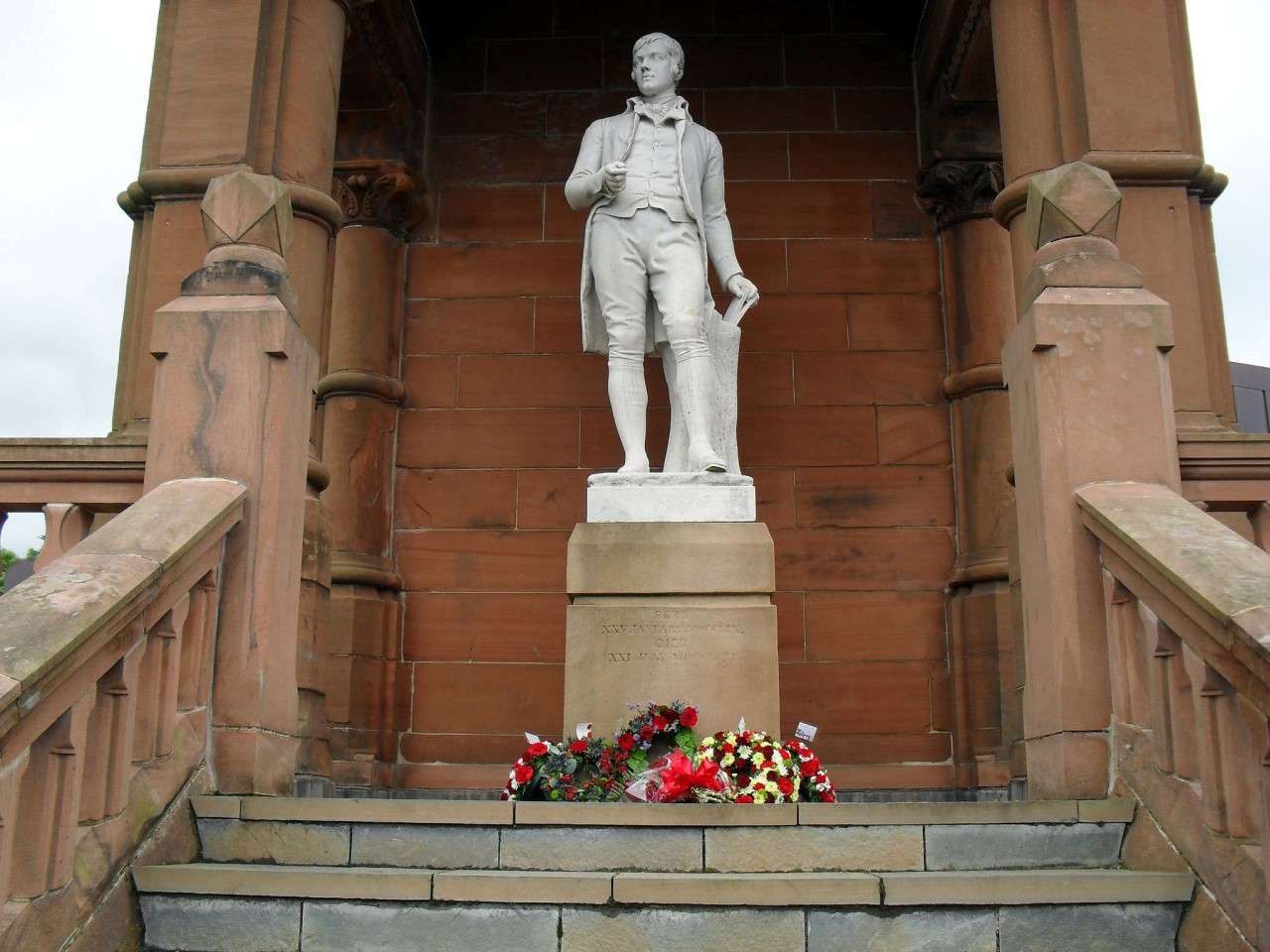
35. A kilt is the traditional Highland dress of Scotland that was originally a plain 16-foot length of cloth that was worn around the waist and over the shoulders. The first records of a coloured tartan date back to 1538 when cloth was dyed with plants and berries.
36. Scots still wear tartan kilts to this day although only for ceremonial reasons, either for the military, weddings or celebrations like Burns Night and Highland games. A knife called a sgian-dubh is traditionally worn in the sock – a practice that originated from friends removing concealed weapons and making them visible as a sign of trust.
37. Scotland’s modern laws are a mix of British law and Scottishish law, which is based on Roman law. An even older Scottish law system originated in Shetland and Orkney, which have strong ties to Norway. Udal law was officially abolished in 1611 but it was cited in some legal cases as recently as the 1990s.
38. Scotland has a rich musical heritage, and there is no greater symbol of Scottish music than the bagpipe. However, contrary to popular belief, the Romans invented the instrument, not the Scottish. The reason bagpipes have a bag is so that dry air is pumped into the delicate reeds in the pipes instead of using moist air from the musicians’ breath.

39. Scotland has a rich history of folk tales, and one of the greatest symbols in Scottish folklore is the kelpie, which is a water horse that is said to be inspired by the foaming waters of the Highland’s fast-flowing rivers.
These mythical horses had the strength of ten normal horses and could appear in human form if desired. The Kelpies,the world’s largest artwork of horses, can be found near Falkirk at Helix Park.
40. As of 2021, 5.5 million people are permanently living in Scotland, but the country welcomes an additional 15.5 million tourists each year. The amount spent by Scotland’s tourists is over £5 billion annually, and the tourism industry provides jobs for nearly 220,000 people.
Facts About Scottish Food and Drink
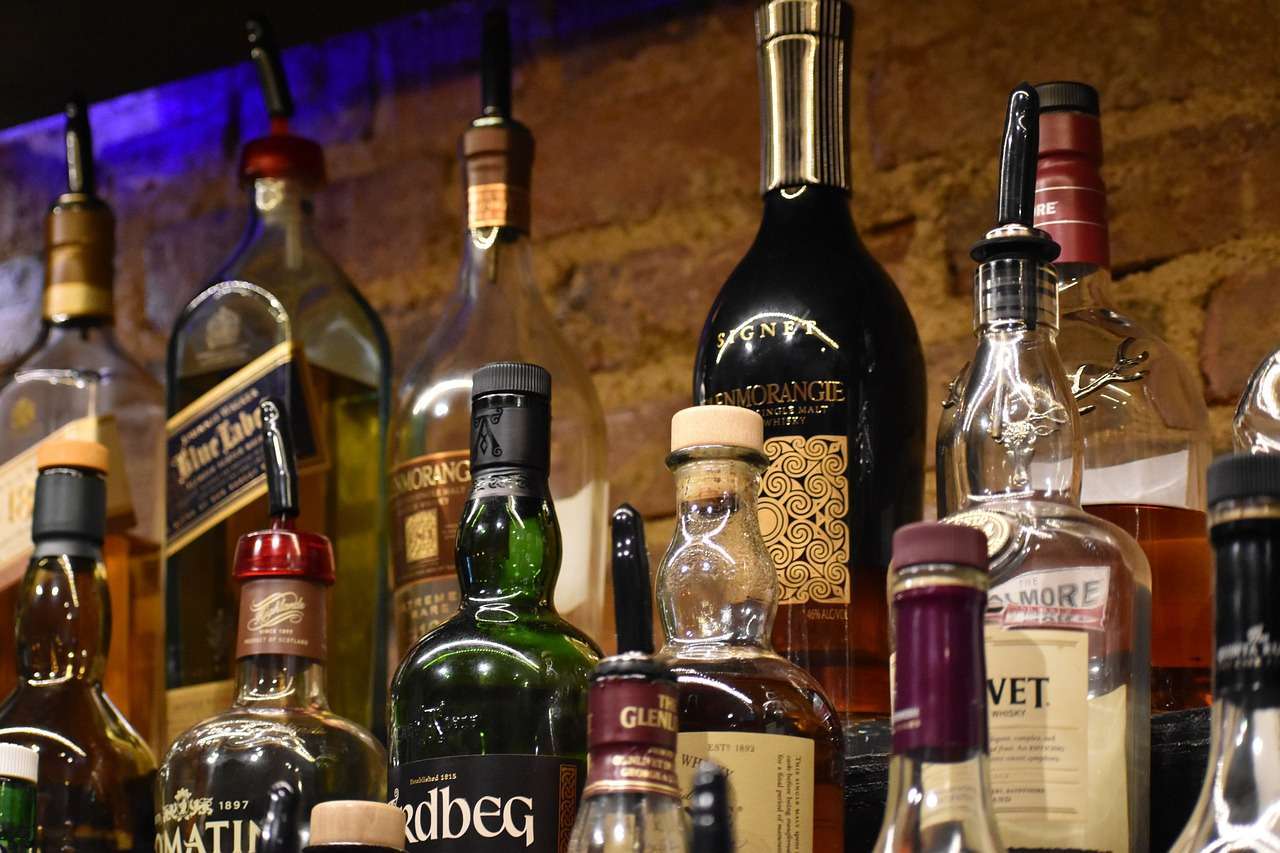
41. As of 2021, there are 128 different whisky distilleries in Scotland based in the five whisky-producing regions of Speyside, Highlands, Lowlands, Islands (plus Islay) and Campbeltown. By law, distilleries that are not located in Scotland cannot call their spirit Scotch.
42. Whisky is one of the biggest exports in Scotland and it accounts for nearly 20% of the entire food and drink export market in the United Kingdom. Income from the Scotch whisky industry is an incredible £140 every second!
43. Scotland is famous for its whisky but it also has a very healthy gin industry that produces 70% of all gin in Britain (the distilling process is essentially the same for gin and whisky).
44. Haggis is considered the national dish, and it is the traditional dish for a Burns Night supper. It is normally made with sheep offal—art, liver, lungs, and kidneys—xed with oats and pepper for seasoning. The first vegetarian version came to the market in 1984.
45. Haggis was originally created as a way for Scottish hunters to store the internal organs of the animals they killed. As the hunters frequently travelled a day or more away from home, they had no way of storing the internal organs safely. Encasing the organs in the animal’s stomach lining preserved them long enough until they could be stored appropriately.
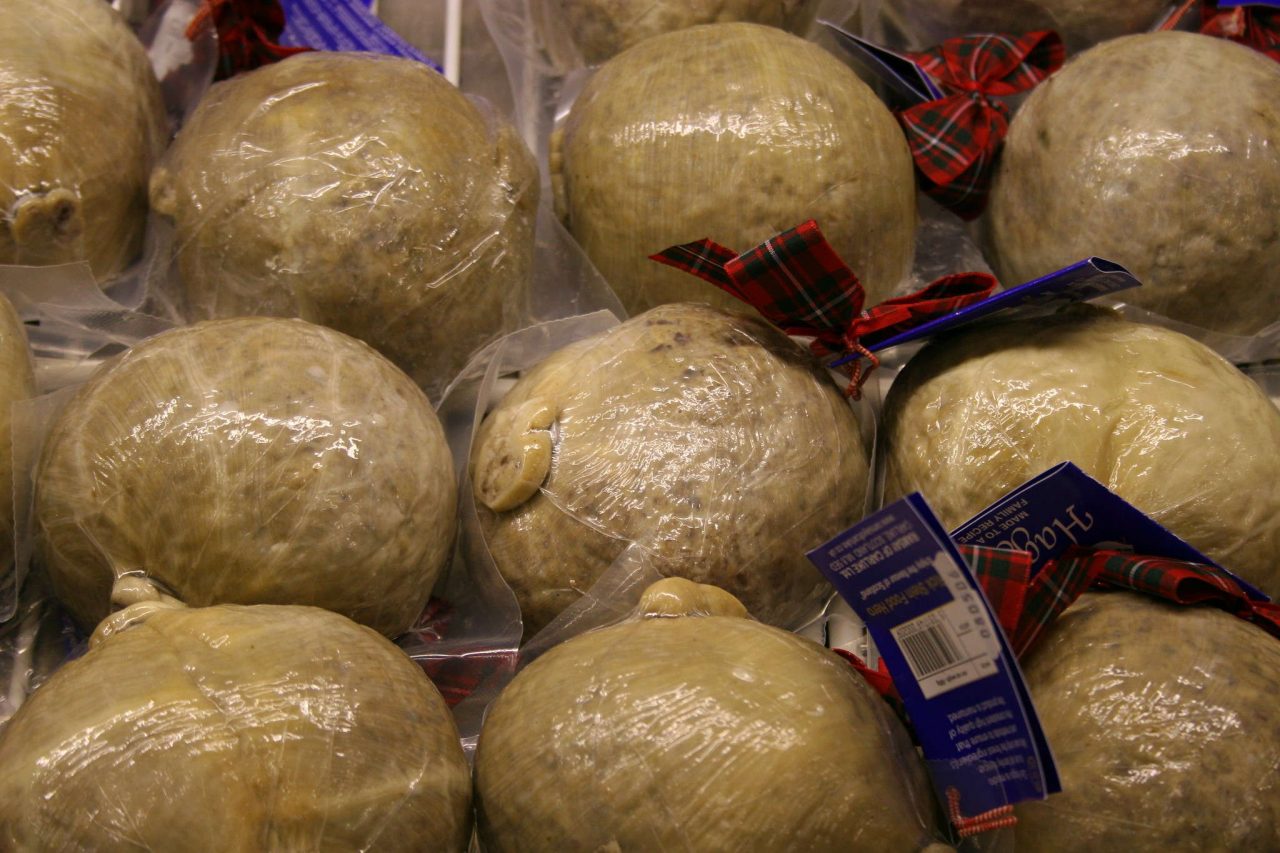
46. In Britain, the biggest consumers of haggis are English, not Scots. Macsween, the country’s biggest haggis manufacturer, claim that over 60% of the 1,000 tons of haggis they make each year is sent over the border.
47. Hall’s of Scotland produced the biggest haggis ever in 2014, according to the Guinness Book of Records. It weighed 1,010 kg and was nearly 3 metres in length! A standard shop-bought haggis weighs around 500 grammes.
48. The Scottish beef market is worth more than the Scottish fruit, dairy and poultry markets combined, with an annual income of £675 million. Coming close is Scottish salmon which is included in over 1 million meals across Britain every day.
49 The Highland cow (also known as the ‘Heilan coo’) is the oldest registered breed of cattle in the world with the first official documentation of the breed dating back to 1884.
50. Historically, one of the biggest Scottish exports was herring, which used to be abundant in the North Sea but is now seriously depleted due to commercialised fishing. In the 1800s, the world’s biggest herring fishing port was the town of Wick in the far north of Scotland.
Another fish that Scotland exports is mackerel which is much-loved in Japan. Mackerel accounts for a quarter of all Scottish exports there.
Protect Your Family From Scotland's Biting Midges
- Powerful, reliable protection for up to 8 hours
- Water- and sweat resistant
- Repels midges, mosquitoes, horse flies, sand flies, fleas and ticks
- Safe for use on adults, children over 30 months and pregnant women
- Non-sticky, moisturising with a pleasant fragrance
- Packaging may vary
Facts About Scotland’s History
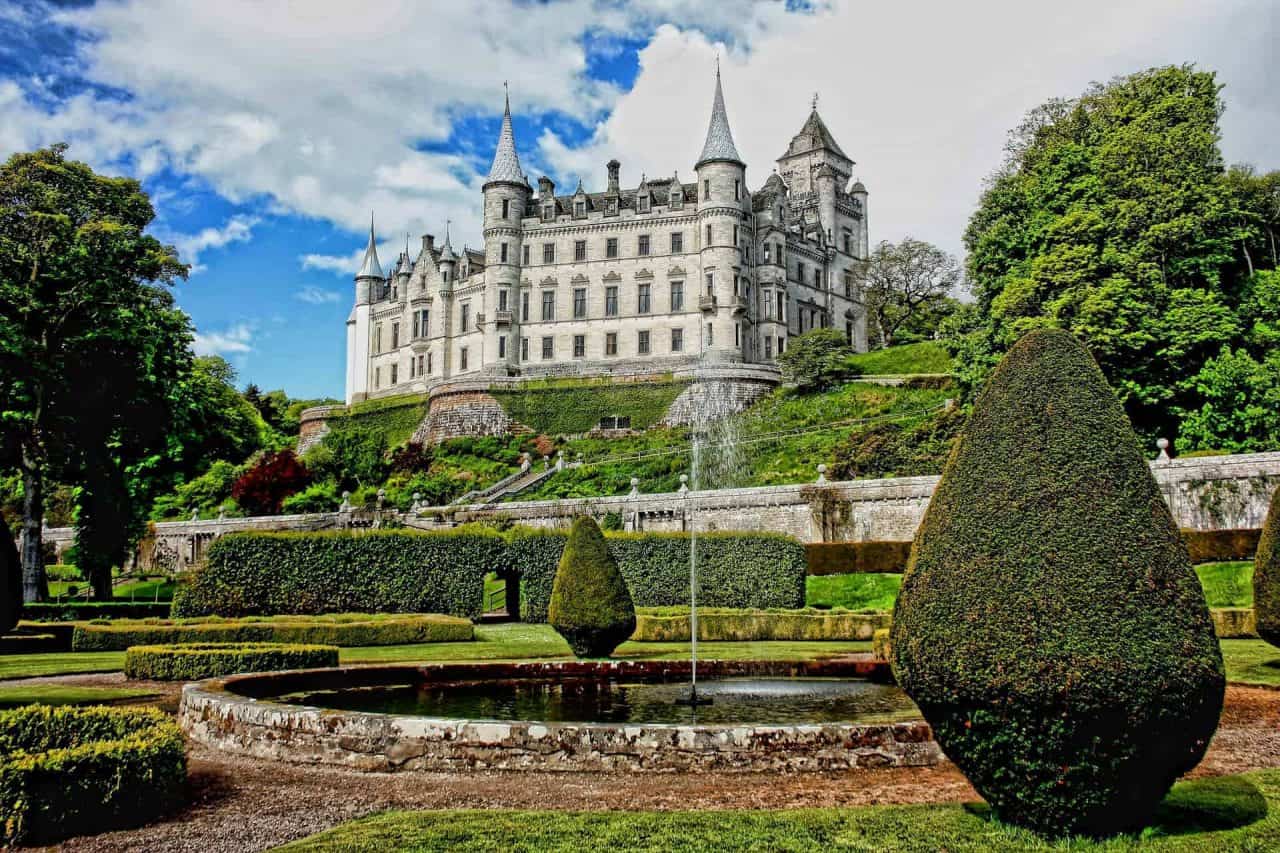
51. One of the most famous prehistoric sites in Scotland is Skara Brae in Orkney. The settlement consists of stone-built houses connected by sheltered passageways that date back to 3,200 BC. It was only discovered in 1850 after a storm blew away the sand that had covered the site for thousands of years.
52. An even older settlement has been uncovered at Cramond near Edinburgh, which has been dated to at least 8,500 BC. The location has stone tools and pits, which suggest that Scotland’s earliest settlers were hunter-gatherers.
53. There are hundreds of standing stones and stone circles in Scotland, but one of the most famous is on the Isle of Lewis. The Calanais standing stones were erected around 5,000 years ago, making them far older than the stones at Stonehenge. Their purpose is unknown, but the most common theory is that they were used to predict the movement of the moon.

54. Ancient Scotland was made up of four different kingdoms; Angles, Britons, Picts and Gaels. Each kingdom spoke a different language and a common language – Latin – wasn’t regularly used until the 6th century.
55. It’s generally accepted that Kenneth McAlpin became the first king of Scotland in AD 842, but in fact, he was only the ruler of the Scottish mainland north of the River Forth. At the time of his coronation at Moot Hill (at Scone Palace) the north and west coast islands of Scotland were under the rule of the Vikings while the south was ruled by Anglo-Saxons.
The first true king of all Scotland was Donald II in AD 889.
56. After the Romans left Scotland, there was a long period of bitter fighting between Scotland and England that culminated in the invasion of Scotland by the English King Edward I. It was this event that brought William Wallace to fame after he raised a Scottish army to push the English back at the Battle of Stirling Bridge in 1297.
57. Scotland’s clan system, which saw one family and their allies rule over specific regions of the country, came into existence in the 1200s. The clan was ruled by a chief who would maintain authority over the area his clan lived in. Each clan was distinguished by the clothes they wore, and this eventually led to the different tartan colours that are still in use today.
There are over 3,000 designs in the Scottish Register of Tartans.
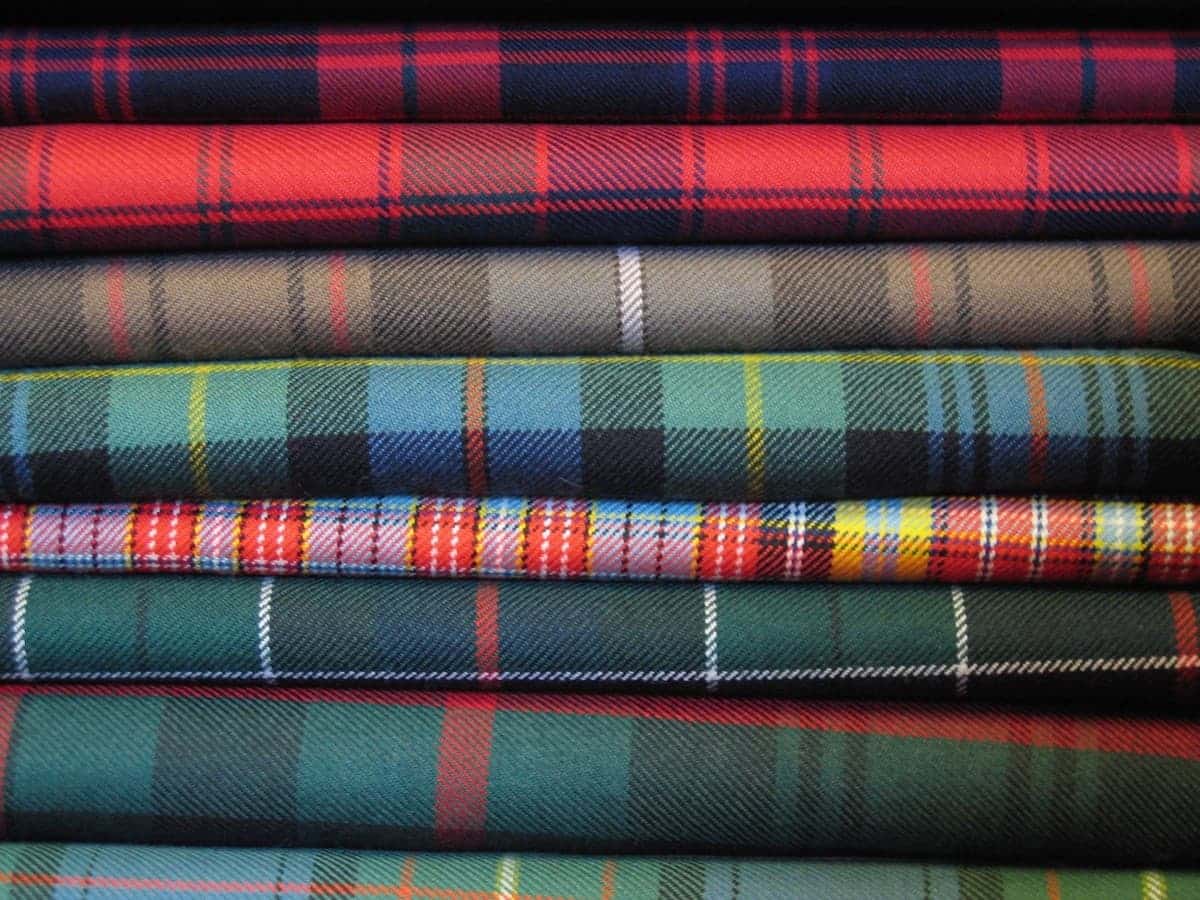
58. The most famous royal in Scotland’s history was Mary, Queen of Scots. After her abdication, she was imprisoned in Loch Leven Castle, which is a fortified building in the middle of Loch Leven in Kinross. The small island that we can see today was much smaller in Mary’s time, as the majority of it was covered by water until the loch was partially drained in 1836.
59. Before 1707, Scotland was an independent country from England. When the Act of Union was signed on May 1 of that year, the United Kingdom was founded, and Scotland, England, and Wales became a single state with one ruling monarch.
60. In 1745, the Jacobites, led by Prince Charles Edward Stewart, took up arms and marched into England in an attempt to reclaim the throne in the Stewart name. They managed to get as far as Derby before turning back and were later defeated at Culloden in the last pitched battle to be fought on British soil.



